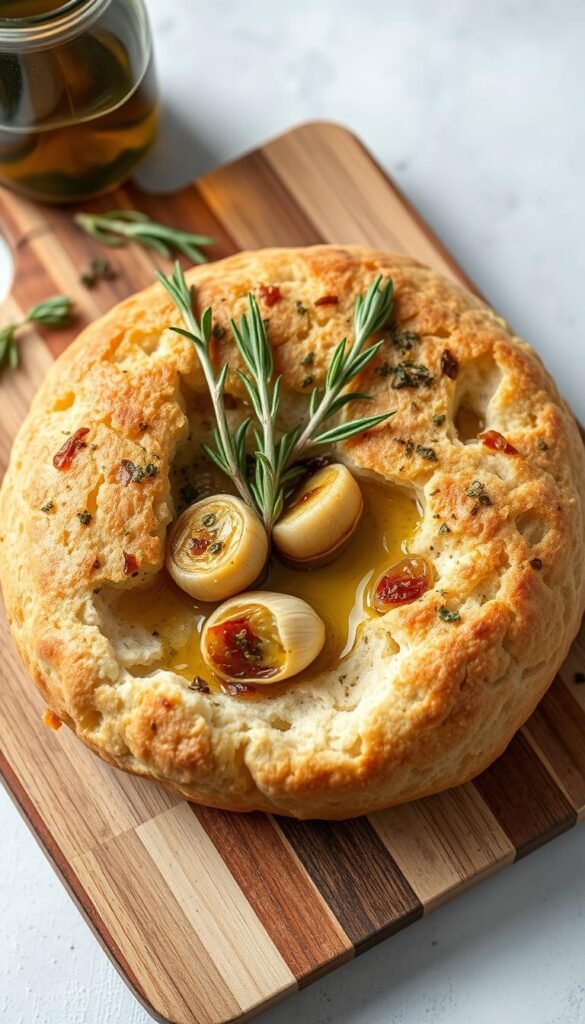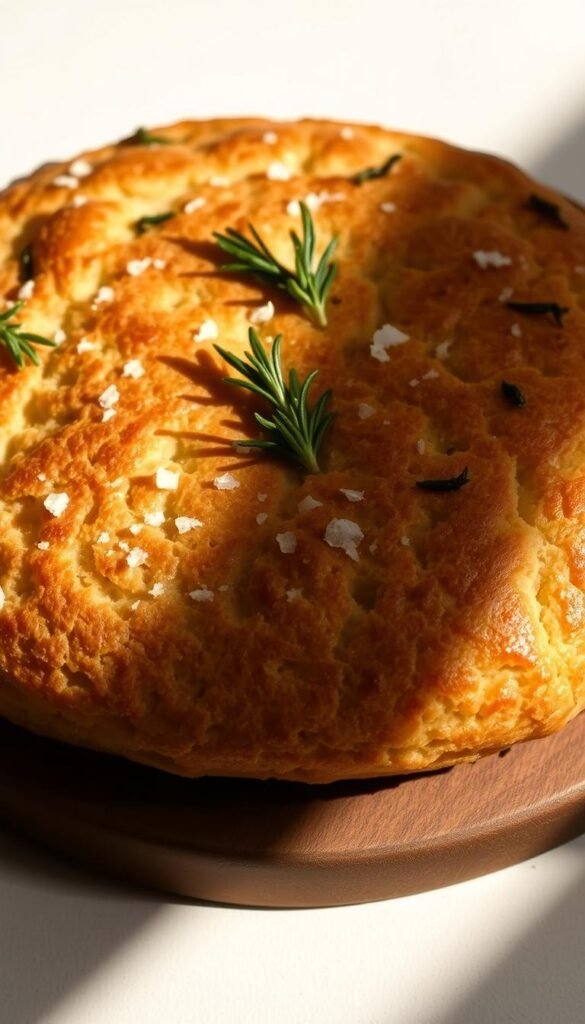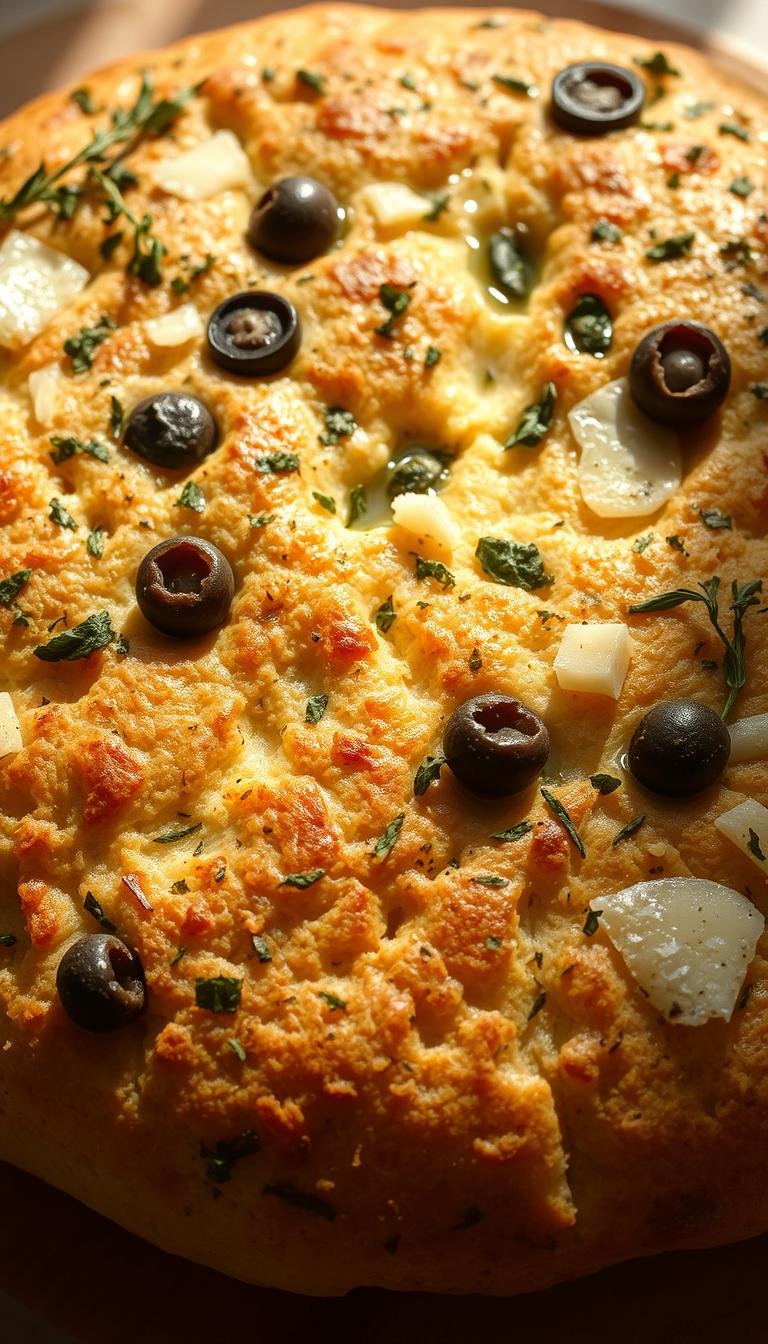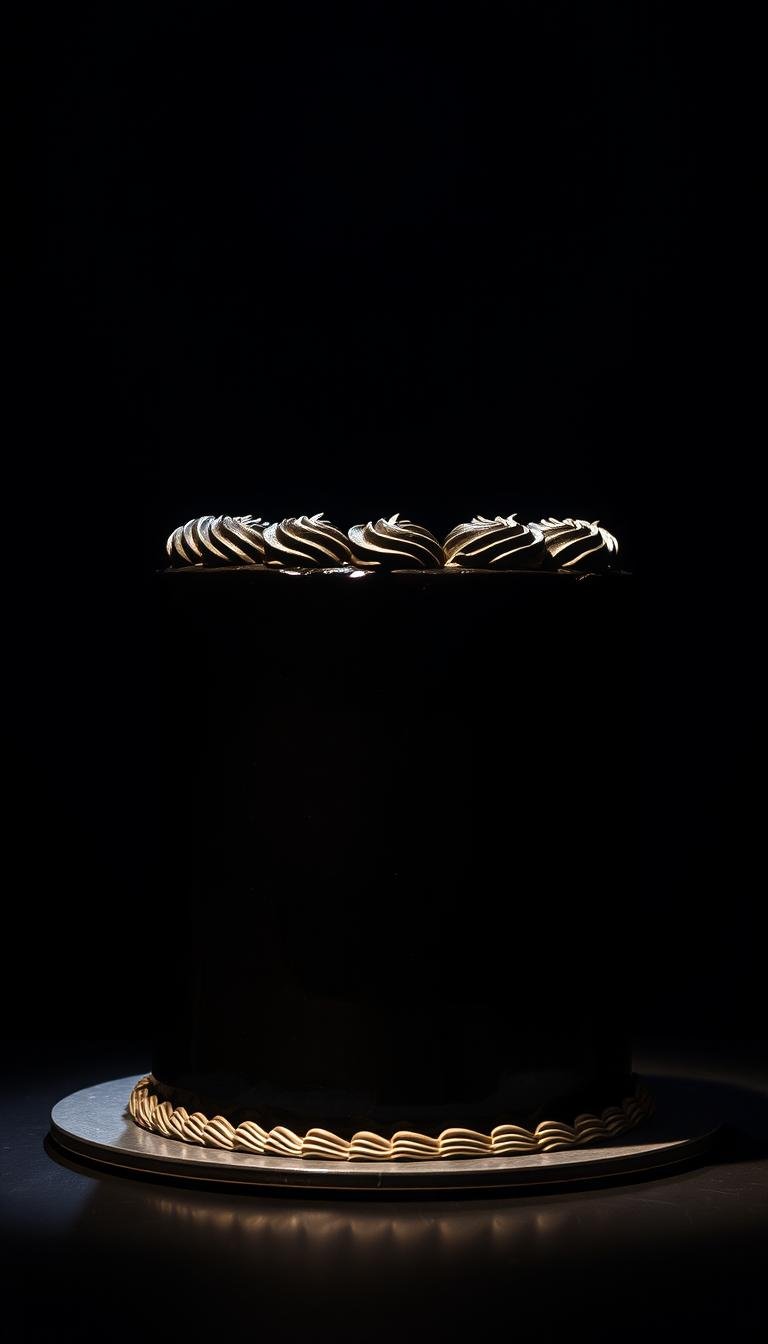5 Sourdough Discard Focaccia Recipes to Stop Wasting Starter
For many home bakers, maintaining a sourdough starter can be a rewarding yet wasteful endeavor. Regularly discarding a portion of the starter to keep it healthy can lead to a significant amount of wasted flour and effort. Did you know that a single sourdough starter can produce over a pound of discard per week?
One of the most delicious ways to reduce this waste is by incorporating the discard into focaccia bread recipes. Focaccia’s versatility makes it an ideal candidate for sourdough discard, allowing bakers to create delicious, crusty bread while minimizing waste.
Key Takeaways
- Reduce waste by using sourdough discard in baking.
- Create delicious focaccia bread with a unique flavor profile.
- Explore various sourdough discard recipes for different occasions.
- Improve your sourdough starter maintenance routine.
- Discover the versatility of focaccia as a bread option.
Understanding Sourdough Discard and Its Value
Sourdough discard is the excess starter removed during the feeding process, but its utility extends far beyond mere waste. When maintaining a sourdough starter, bakers inevitably produce this discard, which is rich in potential for various culinary applications.
What Is Sourdough Discard?
Sourdough discard is the portion of the sourdough starter that is removed and typically discarded during the feeding process to maintain the starter’s health and balance. This process involves discarding a part of the starter and feeding it with fresh flour and water to keep it alive and active for baking.
The creation of sourdough discard is an inherent part of sourdough starter maintenance. It is not waste but a valuable ingredient that can be repurposed in various recipes.
Why You Shouldn’t Throw It Away
Throwing away sourdough discard not only results in potential culinary opportunities lost but also contributes to food waste. By utilizing the discard, bakers can reduce their environmental footprint.
“Reducing food waste is one of the most effective ways to make a positive impact on the environment.”
Moreover, sourdough discard can be creatively used in a variety of recipes, such as pancakes, waffles, and focaccia, enhancing their flavor and nutritional profile.
Nutritional Benefits of Sourdough Discard
Sourdough discard is not just a byproduct; it’s a nutrient-rich ingredient. The fermentation process involved in creating sourdough discard enhances its nutritional benefits, including prebiotic properties that support gut health.
The discard contains beneficial bacteria and has potential digestibility benefits due to the fermentation process. Incorporating sourdough discard into recipes like focaccia can enhance the nutritional value of the final product.
Storing and Managing Your Sourdough Discard
To make the most of your sourdough starter, it’s vital to understand how to store and manage the discard effectively. Proper management not only reduces waste but also ensures that you have a steady supply of discard for various baking recipes, including focaccia.
How Long Discard Stays Fresh
The shelf life of sourdough discard depends on the storage conditions. At room temperature, discard typically remains usable for a few hours to a day, depending on the ambient temperature and the discard’s activity level. In the refrigerator, it can last for several days to a week. It’s essential to check the discard regularly for signs of spoilage, such as an overly sour smell, mold, or an unusual color.
Storage Conditions: Room temperature (a few hours to a day), Refrigerated (several days to a week).
Freezing Techniques for Future Use
Freezing is an excellent method for preserving sourdough discard for extended periods. To freeze discard effectively, portion it into manageable amounts, typically 1/2 cup or 100g, and place them in airtight containers or freezer bags. Label the containers with the date and contents, and store them in the freezer at 0°F (-18°C) or below. When you’re ready to use the frozen discard, simply thaw it in the refrigerator or at room temperature.
It’s worth noting that frozen discard is best used in recipes where the discard is mixed with other ingredients, such as in focaccia or pancakes.
Building Up Enough Discard for Focaccia
Focaccia recipes often require a substantial amount of sourdough discard. To accumulate enough discard, maintain a regular feeding schedule for your sourdough starter, and reserve the discard before feeding. You can store the accumulated discard in the refrigerator to slow down its activity until you have enough for your recipe. Planning ahead and being consistent with your starter’s feeding schedule will ensure you have sufficient discard when you need it.
By following these strategies, you can efficiently manage your sourdough discard, reduce waste, and have a steady supply for your baking needs.
Essential Tools and Ingredients for Sourdough Discard Focaccia
Before diving into the world of sourdough discard focaccia, it’s crucial to understand the essential tools and ingredients required for this culinary journey. Having the right equipment and materials not only simplifies the baking process but also enhances the quality of the final product.
Basic Equipment You’ll Need
To start, you’ll need some basic equipment. A large mixing bowl is essential for combining your ingredients. A digital scale is highly recommended for accurately measuring ingredients, which is crucial in bread making. You’ll also need a baking sheet or a focaccia pan to bake your focaccia. Parchment paper is useful for preventing the dough from sticking to the baking surface. Other helpful tools include a bench scraper for handling dough and a dough whisk or stand mixer for mixing.
Flour Types and Their Effects on Focaccia
The type of flour you use can significantly impact the texture and flavor of your focaccia. Bread flour is a popular choice due to its high protein content, which helps create a chewy texture. All-purpose flour is another option, offering a balance between strength and tenderness. For a more authentic Italian flavor, ’00’ flour can be used, though it may require adjustments in hydration. Whole wheat flour adds a nuttier flavor and denser texture, ideal for those looking for a healthier option.
Oil Selection for Authentic Flavor
Olive oil is a key ingredient in traditional focaccia, contributing to its characteristic flavor and texture. The quality of olive oil can vary significantly, with extra virgin olive oil being the highest grade and offering a rich, fruity flavor. For a more authentic taste, choose a high-quality olive oil that complements the other ingredients in your focaccia. The type of olive oil used can also be adjusted based on the toppings or flavor profile you’re aiming for.
5 Sourdough Discard Focaccia Recipes to Stop Wasting Starter
Discover five unique sourdough discard focaccia recipes designed to make the most of your sourdough starter discard. These recipes have been carefully adapted to work specifically with discard, ensuring successful results without the need for active starter. The collection offers a range of flavors and styles, from traditional Mediterranean-inspired options to more creative variations, providing something for every taste.
The recipes are structured to progress from simple to more complex, allowing you to build your skills as you explore different ways to use sourdough discard. Whether you’re a beginner or an experienced baker, these recipes will help you create delicious focaccia while reducing waste.

Recipe 1: Classic Rosemary and Sea Salt Sourdough Discard Focaccia
Indulge in the simplicity and elegance of a well-crafted Classic Rosemary and Sea Salt Sourdough Discard Focaccia. This traditional Italian bread is elevated by the aromatic essence of rosemary and the subtle crunch of sea salt, making it a perfect accompaniment to any meal.
Ingredients List
To create this delightful focaccia, you’ll need the following ingredients:
- 1 cup sourdough discard (100% hydration)
- 2 cups all-purpose flour
- 1/2 cup warm water
- 1/4 teaspoon active dry yeast
- 1 tablespoon olive oil
- 1 teaspoon salt
- 2 sprigs fresh rosemary, chopped
- 1/2 teaspoon sea salt
| Ingredient | Volume Measurement | Weight Measurement |
|---|---|---|
| Sourdough Discard | 1 cup | 240g |
| All-purpose Flour | 2 cups | 250g |
Step-by-Step Instructions
Follow these detailed steps to create your Classic Rosemary and Sea Salt Sourdough Discard Focaccia:
- Mix the sourdough discard, flour, warm water, and yeast in a large bowl.
- Knead the dough for 10 minutes until it becomes smooth and elastic.
- Place the dough in a greased bowl, cover it, and let it rise in a warm place for 4 hours.
- Preheat your oven to 425°F (220°C).
- Punch down the dough and transfer it to a baking sheet lined with parchment paper.
- Dimple the dough with your fingers, drizzle with olive oil, and sprinkle with chopped rosemary and sea salt.
- Bake for 20-25 minutes, or until the focaccia is golden brown.
Creating Perfect Dimples and Texture
The characteristic dimples in focaccia are not just aesthetically pleasing; they also play a crucial role in the bread’s texture and ability to hold olive oil. To create the perfect dimples, gently press your fingers into the dough, making sure not to puncture it. This process allows the dough to relax and creates pockets for the oil to settle into, enhancing the overall flavor and texture.
“The art of making focaccia lies in the balance between a crispy crust and a soft, airy interior. The dimples are a key feature, as they provide a reservoir for olive oil, elevating the bread’s flavor profile.” – Artisan Bread Maker
Serving Suggestions
Classic Rosemary and Sea Salt Sourdough Discard Focaccia is versatile and can be served in various ways:
- As a side to soups or salads
- As a base for sandwiches
- With olive oil and balsamic vinegar for dipping
- Paired with cured meats and cheeses for a charcuterie board
This recipe serves as a foundation for exploring other sourdough discard focaccia variations, allowing you to experiment with different flavors and ingredients.
Recipe 2: Roasted Garlic and Fresh Herb Sourdough Discard Focaccia
Elevate your sourdough discard focaccia game with the rich flavors of roasted garlic and fresh herbs. This recipe builds upon the techniques established in the previous classic rosemary and sea salt focaccia, introducing the deep, nutty flavor of roasted garlic and the brightness of fresh herbs.

Ingredients List
To make this delicious roasted garlic and fresh herb sourdough discard focaccia, you’ll need the following ingredients:
- 1 cup sourdough discard
- 1 cup warm water
- 3 cups bread flour
- 1 tsp salt
- 2 tbsp olive oil
- 4-6 cloves garlic, roasted (see roasting instructions below)
- 1/4 cup fresh herbs (such as rosemary, thyme, or oregano), chopped
For roasting garlic, preheat your oven to 400°F (200°C). Cut the top off a whole head of garlic, drizzle with olive oil, and wrap in foil. Roast for 30-40 minutes, or until the garlic is tender and mashed. Let cool, then squeeze the garlic cloves out of their skins.
Step-by-Step Instructions
Follow these steps to create your roasted garlic and fresh herb sourdough discard focaccia:
- Mix the sourdough discard, warm water, bread flour, and salt in a large bowl until a shaggy dough forms.
- Knead the dough on a floured surface for 5-10 minutes, until it becomes smooth and elastic.
- Place the dough in a greased bowl, cover with plastic wrap, and let rise in a warm place for 1-2 hours, or until doubled in size.
- Preheat your oven to 425°F (220°C). Line a baking sheet with parchment paper.
- Punch down the dough and transfer it to the prepared baking sheet. Shape into a rectangle or circle, about 1/2 inch thick.
- Dimple the dough with your fingers, then drizzle with olive oil and sprinkle with roasted garlic and fresh herbs.
- Bake for 20-25 minutes, or until golden brown.
Herb Combinations for Different Seasons
One of the joys of making focaccia is experimenting with different herb combinations to suit the season. Here are some suggestions:
- Winter: Rosemary and thyme
- Spring: Chives and parsley
- Summer: Basil and oregano
- Autumn: Sage and rosemary
Feel free to mix and match herbs to create your own unique flavor profiles. Remember to adjust the quantity according to the potency of the herbs you’re using.
Pairing with Soups and Stews
This roasted garlic and fresh herb focaccia is perfect for dipping into soups and stews. Try pairing it with:
- Roasted vegetable soup
- French onion soup
- Beef stew
- Minestrone
The rich flavor of the roasted garlic and the freshness of the herbs complement a wide range of soups and stews, making this focaccia a versatile addition to your meal.
Recipe 3: Sun-Dried Tomato and Kalamata Olive Sourdough Discard Focaccia
For a taste of the Mediterranean, try making sun-dried tomato and Kalamata olive sourdough discard focaccia. This recipe brings together the rich, savory flavors of sun-dried tomatoes and Kalamata olives with the tangy goodness of sourdough discard, creating a truly exceptional Mediterranean focaccia.
Ingredients List
To make this delicious olive focaccia bread, you’ll need the following ingredients:
- 1 cup sourdough discard
- 1 cup warm water
- 3 cups all-purpose flour
- 1 tsp salt
- 1 tbsp olive oil
- 1/2 cup sun-dried tomatoes, chopped
- 1/4 cup Kalamata olives, pitted
- 1 tsp dried oregano
- 1 tsp garlic powder
When selecting sun-dried tomatoes, opt for those packed in oil for added flavor. If Kalamata olives are not available, you can substitute with other brine-cured black olives.
Step-by-Step Instructions
Creating this sun-dried tomato focaccia involves a few key steps:
- Combine sourdough discard, warm water, flour, and salt in a bowl. Mix until a shaggy dough forms.
- Add olive oil, chopped sun-dried tomatoes, and Kalamata olives to the dough. Mix until they are evenly distributed.
- Knead the dough for about 10 minutes until it becomes smooth and elastic.
- Place the dough in a greased bowl, cover, and let it rise in a warm place for 1-2 hours, or until doubled in size.
- Preheat your oven to 425°F (220°C). Line a baking sheet with parchment paper.
- Transfer the dough to the prepared baking sheet, dimple the surface, and bake for 20-25 minutes, or until golden brown.
One of the challenges in making this focaccia is managing the moisture from the sun-dried tomatoes. To mitigate this, you can pat the tomatoes dry with paper towels before chopping them.
Mediterranean Flavor Enhancements
To further enhance the Mediterranean flavors in this focaccia, consider adding:
- Feta cheese crumbles: Sprinkle 1/4 cup of crumbled feta over the dough before baking for a tangy, salty flavor.
- Capers: Rinse and scatter 2 tbsp of capers over the focaccia before baking for a burst of flavor.
- Preserved lemon: Finely chop 1 tbsp of preserved lemon and mix it into the dough for a unique, citrusy note.
These ingredients will complement the sun-dried tomatoes and olives, creating a more complex flavor profile.
Make-Ahead Options
This Mediterranean focaccia can be prepared in advance to suit your schedule:
- You can refrigerate the dough after the first rise for up to 24 hours. Allow it to come to room temperature before shaping and baking.
- Alternatively, bake the focaccia fully, then cool and store it in an airtight container at room temperature for up to 2 days. Reheat in the oven before serving.
By making this sun-dried tomato and Kalamata olive sourdough discard focaccia, you’ll not only reduce waste but also enjoy a delicious, flavorful bread that’s perfect for dipping in olive oil or serving alongside your favorite Mediterranean dishes.
Recipe 4: Caramelized Onion and Gruyère Sourdough Discard Focaccia
Our caramelized onion and Gruyère sourdough discard focaccia is a culinary masterpiece, bringing together the best of savory and sweet flavors. This recipe is perfect for those looking to create a deliciously rich and savory focaccia that showcases the depth of flavor achievable with sourdough discard.

Ingredients List
To make this delectable focaccia, you will need the following ingredients:
- 1 cup sourdough discard
- 1 cup warm water
- 3 tablespoons olive oil
- 1 teaspoon salt
- 3 cups all-purpose flour
- 1 large onion, thinly sliced
- 2 cloves garlic, minced
- 1 cup Gruyère cheese, grated
- Fresh thyme leaves for garnish
Step-by-Step Instructions
Follow these steps to create your caramelized onion and Gruyère sourdough discard focaccia:
- Combine sourdough discard, warm water, olive oil, and salt in a mixing bowl.
- Add flour to the mixture and knead until a smooth dough forms.
- Let the dough rise for 2 hours, or until it has doubled in size.
- Preheat your oven to 425°F (220°C).
- Spread the dough on a baking sheet and top with caramelized onions and Gruyère cheese.
- Bake for 20-25 minutes, or until the focaccia is golden brown.
Properly Caramelizing Onions
Caramelizing onions is a crucial step in this recipe. To achieve perfectly caramelized onions, follow these tips:
- Use a large, heavy-bottomed pan to prevent burning.
- Cook the onions over medium-low heat for 30-40 minutes, stirring occasionally.
- Add a pinch of salt to enhance the caramelization process.
- Onions are done when they are deep golden brown and fragrant.
Alternative Cheese Options
While Gruyère is the star of this recipe, you can experiment with other cheeses for different flavor profiles:
- Comté: Adds a nutty, slightly sweet flavor.
- Emmental: Provides a milder, creamier taste.
- Aged Cheddar: Offers a sharp, tangy contrast.
Recipe 5: Cinnamon Apple Breakfast Sourdough Discard Focaccia
Elevate your breakfast game with a sweet and satisfying cinnamon apple sourdough discard focaccia recipe. This innovative twist on traditional focaccia combines the tanginess of sourdough discard with the warmth of cinnamon and the sweetness of apples, creating a perfect treat for any morning.
Ingredients List
To make this delightful breakfast focaccia, you’ll need the following ingredients:
- 1 cup sourdough discard
- 2 cups all-purpose flour
- 1/4 cup granulated sugar
- 1/2 teaspoon salt
- 1/4 teaspoon ground cinnamon
- 1/2 cup warm water
- 2 tablespoons unsalted butter, melted
- 1 large apple, peeled and diced
- Optional: cinnamon sugar for topping
Step-by-Step Instructions
Follow these steps to create your cinnamon apple breakfast focaccia:
- In a large mixing bowl, combine sourdough discard, flour, sugar, salt, and cinnamon.
- Add warm water and mix until a shaggy dough forms.
- Knead the dough for 10 minutes until it becomes smooth and elastic.
- Place the dough in a greased bowl, cover, and let it rise in a warm place for about 2 hours, or until doubled in size.
- Preheat your oven to 425°F (220°C). Line a baking sheet with parchment paper.
- Punch down the dough and transfer it to the prepared baking sheet. Shape into a rectangle.
- Dimple the dough with your fingers, then drizzle with melted butter.
- Scatter diced apple over the dough, leaving a small border around the edges.
- Bake for 25-30 minutes, or until golden brown.
- Optional: Sprinkle with cinnamon sugar before baking for extra flavor.
Seasonal Fruit Variations
While apples are a great choice for this recipe, you can experiment with other seasonal fruits to keep your breakfast focaccia exciting throughout the year:
- Winter: Use pears or cranberries for a different flavor profile.
- Summer: Berries like blueberries or raspberries add a sweet and tangy twist.
- Late Summer: Try using stone fruits like peaches or nectarines.
Adjust the amount of fruit according to its moisture content to maintain the right dough consistency.
Sweet Glaze Options
Enhance your cinnamon apple breakfast focaccia with these sweet glaze options:
- Simple Honey Drizzle: Mix honey with a little warm water for a quick glaze.
- Maple-Cinnamon Glaze: Combine maple syrup with ground cinnamon for a rich flavor.
- Vanilla Bean Icing: Whisk together powdered sugar, vanilla extract, and a pinch of salt for a creamy icing.
These glazes not only add flavor but also provide a beautiful finishing touch to your breakfast focaccia.
Adapting Recipes for Dietary Restrictions
Sourdough discard focaccia can be adapted to suit various dietary needs without sacrificing flavor. Whether you’re gluten-intolerant, vegan, or watching your salt and sugar intake, you can still enjoy the delicious taste of sourdough discard focaccia with a few simple adjustments.
Gluten-Free Flour Substitutions
For those who require gluten-free options, substituting traditional flour with a gluten-free blend is a viable solution. A good gluten-free flour blend for focaccia should include a mix of rice flour, potato starch, and tapioca flour. A typical ratio is 50% rice flour, 25% potato starch, and 25% tapioca flour. Adding xanthan gum (about 1 teaspoon per 2 cups of flour blend) can help improve texture. When using gluten-free flours, it’s essential to adjust the hydration level, as gluten-free dough tends to be stickier. Start with a lower hydration level and adjust as needed to achieve a workable dough.

Vegan Alternatives
To make vegan sourdough discard focaccia, replace honey with maple syrup in sweet recipes and omit or substitute cheese in savory variations. For cheese alternatives, consider using vegan mozzarella or nutritional yeast, which can provide a cheesy flavor. When using nutritional yeast, start with a small amount (about 1 tablespoon per loaf) and adjust to taste. Ensure that your sourdough starter is vegan-friendly, as some store-bought or fed starters might contain honey or other animal products.
Reducing Salt and Sugar
Reducing salt and sugar in sourdough discard focaccia recipes requires a thoughtful approach to maintain flavor. For lower sodium content, consider using salt-free seasoning blends or herbs to enhance flavor. When reducing sugar, you can use natural sweeteners like stevia or monk fruit sweetener, which are sweeter than sugar, so use them sparingly. Start by reducing the amount by 25% and adjust to taste. These adjustments allow you to enjoy sourdough discard focaccia while meeting your dietary needs.
Troubleshooting Common Sourdough Discard Focaccia Problems
The journey to perfecting sourdough discard focaccia involves overcoming several common hurdles. Bakers often face issues that can be frustrating, but with the right techniques and understanding, these problems can be easily resolved. In this section, we will address the most common challenges encountered when making sourdough discard focaccia, providing practical solutions for each.
Dealing with Sticky Dough
One of the most common issues with sourdough discard focaccia is dealing with sticky dough. The discard can sometimes create wetter doughs than recipes using active starter, leading to a sticky consistency. To handle high-hydration dough, it’s essential to use the right techniques. Instead of dusting with flour, which can alter the dough’s composition, use oil to handle the dough. This method prevents the dough from sticking without changing its inherent characteristics. Proper bench rest timing is also crucial; allowing the dough to rest for the right amount of time can help in managing its stickiness.
For instance, using a generous amount of oil on your hands and work surface can significantly reduce sticking. Additionally, ensuring that your dough is not overworked during shaping can help maintain its texture. Here’s a simple guide to handling sticky dough:
- Use oil instead of flour to prevent sticking.
- Allow for proper bench rest to relax the dough.
- Avoid overworking the dough during shaping.
Fixing Flat or Dense Focaccia
Flat or dense focaccia is another common issue that bakers face. Several factors can contribute to this problem, including fermentation issues, improper proofing temperatures, and inadequate shaping techniques. To troubleshoot, it’s crucial to identify the root cause. For instance, if the dough is not fermenting properly, it may not rise as expected. Ensuring that your starter is healthy and active is key to proper fermentation.
Improper proofing temperatures can also affect the rise of your focaccia. A temperature that is too low can slow down fermentation, leading to dense focaccia. Here’s a table summarizing common causes and remedies for flat or dense focaccia:
| Cause | Remedy |
|---|---|
| Insufficient Fermentation | Ensure healthy starter and adequate proofing time |
| Low Proofing Temperature | Proof in a warmer environment or use a proofing box |
| Overworking the Dough | Minimize handling and mixing to preserve dough structure |
Adjusting for Different Starter Hydrations
The hydration level of your sourdough starter can significantly impact your focaccia recipe. Whether your discard comes from a liquid (100% hydration) or stiff (50-60% hydration) starter, adjustments are necessary to achieve the right dough consistency. For a liquid starter, you may need to reduce the amount of water in the recipe, while a stiff starter may require more water.
To adjust, you can use a simple formula: calculate the water content in your discard and adjust the recipe accordingly. For example, if your recipe calls for 1 cup of water and you’re using 1 cup of 100% hydration discard, you might reduce the water to 1/2 cup. Here’s a basic formula to guide you:
- For 100% hydration discard: Reduce water by half the amount of discard used.
- For 50% hydration discard: Adjust water based on the flour and water content in the discard.
By understanding and adjusting for your starter’s hydration, you can achieve a consistent dough texture, leading to better focaccia.
Conclusion
By embracing sourdough discard uses, bakers can significantly reduce starter waste while creating delectable homemade focaccia. The five recipes outlined in this article provide a versatile foundation for experimenting with various flavors and ingredients, ensuring that your sourdough discard is always put to good use.
Reducing waste in the kitchen is not only environmentally friendly, but it also fosters creativity and resourcefulness. By repurposing sourdough discard, you’re participating in a long-standing culinary tradition that values every ingredient. Whether you’re making a classic rosemary and sea salt focaccia or a sweet cinnamon apple breakfast version, you’re crafting a delicious, sustainable bread that impresses.
As you continue to experiment with sourdough discard focaccia, feel empowered to try new combinations and ingredients. Share your creations and adaptations, inspiring others to join in reducing food waste and savoring the rewards of homemade focaccia.






